Having entered into Vietnam for a few years, the technique of planting in glass containers called terrariums has gained much attention from youngsters.
To better study about the hobby, we arrived in Green Oasis café on a narrow alley on Le Thanh Tong Street (Hanoi). Its owner, Nguyen Tien Dung, is one of the first people in Hanoi to know about terrarium arts and study about it through foreign websites. Dung started to make some terrariums in February, 2014. After bringing some to students’ fairs and receiving praises of youngsters, he decided to open Green Oasis café to sell his products and guide interested people on the technique in October, 2014.

There are many materials needed to make a terrarium. Photo: Khanh Long/VNP

Different layers of soil are put into the container to provide nutrition to the plants. Photo: Khanh Long/VNP
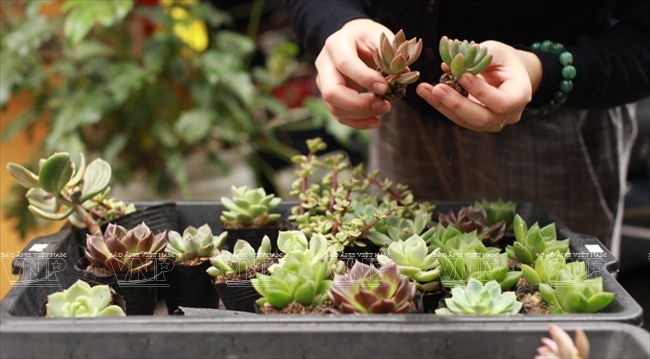
One of the popular types of plants for terrarium are succulents from Da Lat. Photo: Khanh Long/VNP
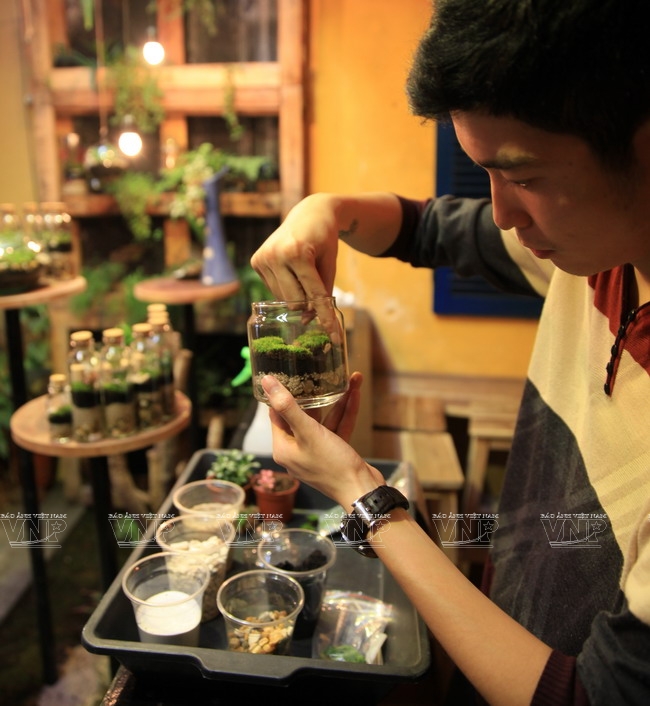
Pebbles and moss are included to keep the high humidity level in the container. Photo: Khanh Long/VNP

It requires the growers' delicacy to put the plants into the container without breaking its layout. Photo: Khanh Long/VNP
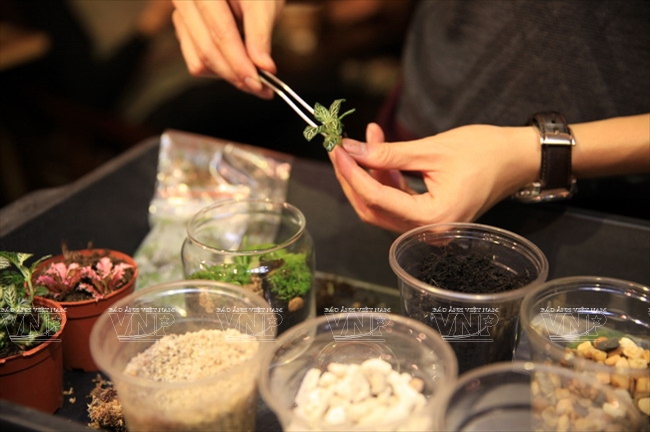
Special tools are needed to put plants into the narrow mouthed containers. Photo: Khanh Long/VNP |
Any common transparent containers such as fish bowls or laboratory flasks and beakers can be easily transferred into terrariums in a couple of minutes. A terrarium can be closed or open, and there are advantages and disadvantages to each. The closed ones can keep water vapour inside the containers, thus requiring less care.
It is the process of putting the plants and other supportive items such as pebbles, moss or activated charcoal into the containers that takes much effort.
The types of terrarium plants must be carefully chosen. The plants should be easy to live and to tend, as well as of slow-growing types so the terrarium doesn't quickly outgrow itself and break the general layout. Some of the most popular plants for terrarium making are succulents and cactus from Da Lat with prices ranging from 20,000 to 50,000 dong. Other foreign plants are also imported for trial cultivation.
In order to avoid subsidence and to hold the plants up, adding pebbles to the base layer of the containers is needed. A layer of sheet moss ought to be included to soak up extra water and maintain the high humidity level inside the terrariums. Putting activated charcoal in the containers is also necessary to prevent mould and bacteria from developing.
After all the delicate steps, the terrarium turns into a beautiful tiny garden.
Though the café has been opened over a year, Green Oasis has become a famous place for people who love terrarium planting. People coming there are mostly youngsters who want to learn and make self-made terrariums as ornaments or gifts to present to their friends and families.
Some terrariums on display at Green Oasis Café:
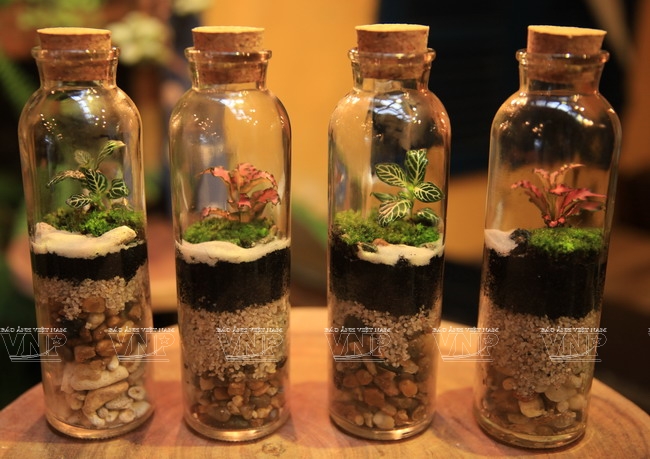
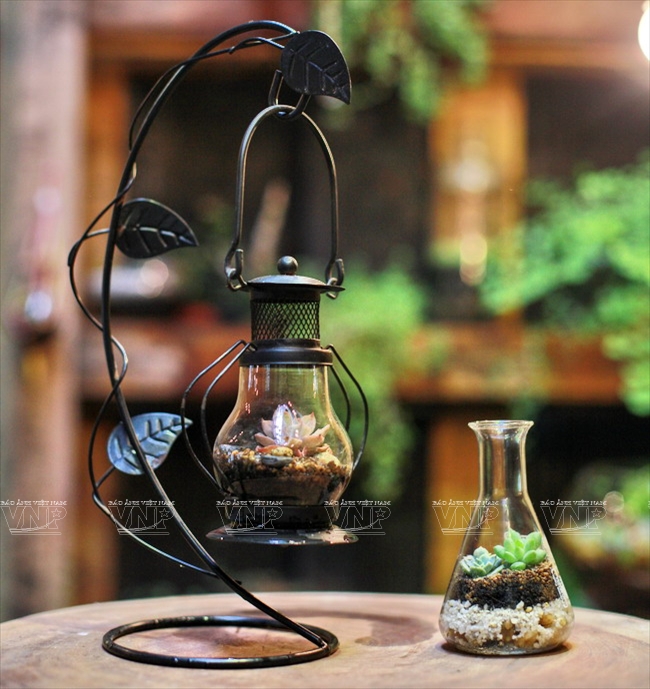
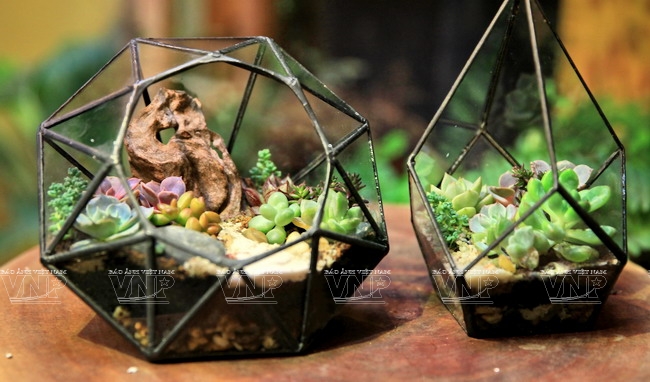
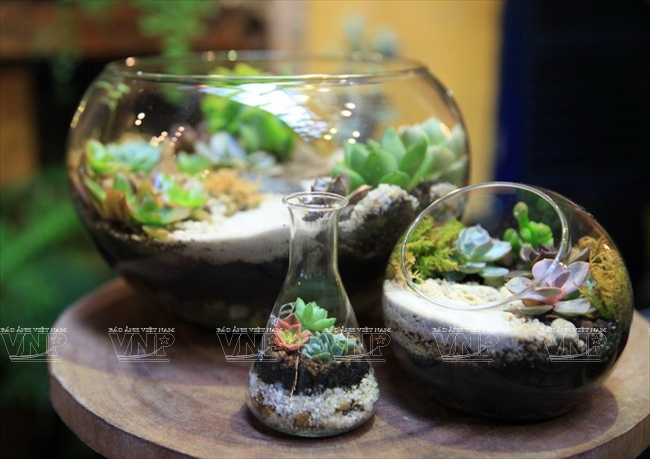
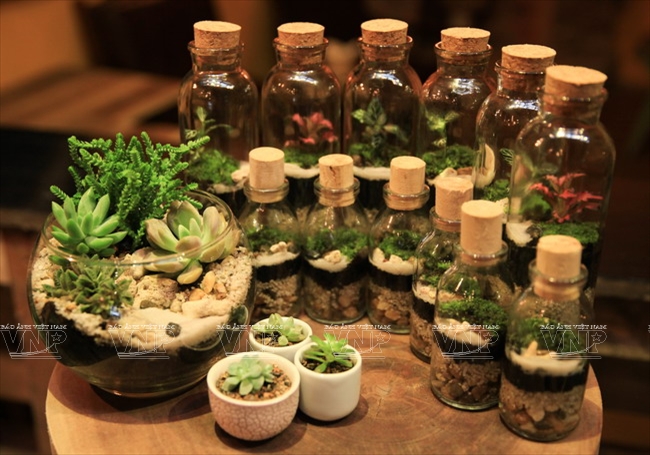
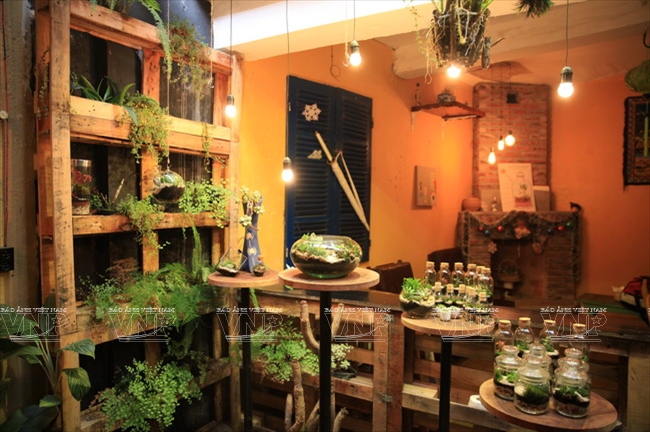
Green Oasis provides people with a green space of plants. Photo: Khanh Long/VNP |
Story: Ngan Ha – Photos: Khanh Long
phamtrangnhung